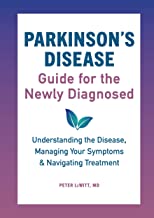Parkinson’s Disease
Parkinson’s Disease is a disorder of the central nervous system that affects movement, often including tremors.
Nerve cell damage in the brain causes dopamine levels to drop, leading to the symptoms of Parkinson’s.
Parkinson’s often starts with a tremor in one hand. Other symptoms are slow movement, stiffness, and loss of balance.
Medications can help control the symptoms of Parkinson’s.
Parkinson’s Disease is a progressive disease of the nervous system marked by tremor, muscular rigidity, and slow, imprecise movement, chiefly affecting middle-aged and elderly people. It is associated with degeneration of the basal ganglia of the brain and a deficiency of the neurotransmitter dopamine.
Symptoms:
Cluster Number:
Wiki Number: PW153
Diagnosis: Parkinson’s Disease (Very complex; please read the Wikipedia article.)
US Patients: 2-6X likelihood of dementia
World Patients: 6.2Mil&117,400 Deaths (2015)
Sex Ratio:
Age Onset: Over 60, usually; unless “early-onset Parkinson’s”
Brain Area: Cell deaths among the subantia nigra leads to dopamine deficits; Cells die from proteins into Lewy bodies in the neurons
Symptoms: tremor, slowness(bradykinesia), stiffness(excessive muscle contraction) and postural instability(10% fall weekly)
Progression: As it progresses, poor decision-making, less impulse control, impaired recall, less control of attention
Causes: genetics, injuries, pesticides;brain lesions from strokes;alpha-synuclein protein in the brain buildup; 50% have hallucinations
Medications: L-DOPA; deep brain stimulation by microelectrodes reduces muscular symptoms;
Therapies: Imaging by MRI, T2* and SW;, neuromelanin-MRI; Diffusion, MRI; PET; SPECT; DaTSCAN is the only FDA approved way to distinguish.
Youtube Video: Parkinson’s Disease: Adversity or Adventure?
Amazon or Library Book:
Parkinson’s Disease – Guide for the Newly Diagnosed
Click the book to link or buy from Amazon.

